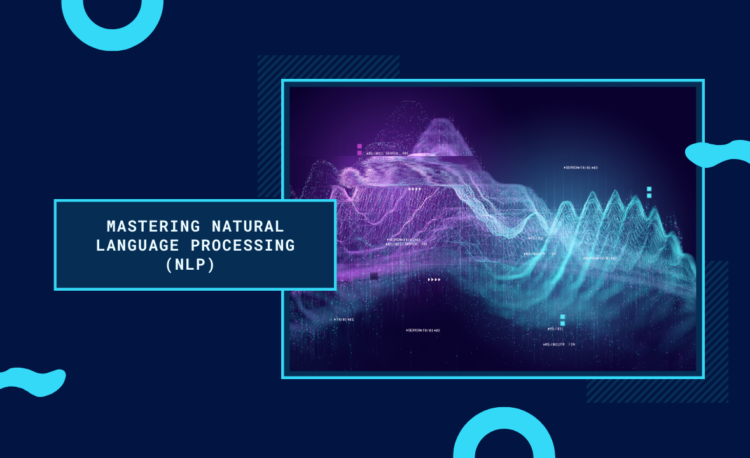Natural Language Processing (NLP) is a branch of artificial intelligence that focuses on the interaction between computers and humans through natural language. The ultimate objective of NLP is to enable computers to understand, interpret, and respond to human languages in a way that is both valuable and meaningful. In this article, we will delve into the basics of NLP, explore text processing and sentiment analysis, introduce essential NLP libraries like NLTK and SpaCy, provide a hands-on guide to creating a text classifier, and discuss advanced NLP techniques such as Named Entity Recognition and Machine Translation.
Basics of NLP
Natural Language Processing combines computational linguistics with machine learning and deep learning models. Its goal is to allow machines to process and analyze large amounts of natural language data.
Key Concepts in NLP
- Tokenization: The process of breaking down text into smaller units called tokens (words, phrases, symbols).
- Lemmatization and Stemming: Reducing words to their base or root form. Lemmatization considers the context and converts the word to its meaningful base form, whereas stemming simply removes suffixes.
- Part of Speech Tagging (POS): Identifying the grammatical parts of speech (nouns, verbs, adjectives, etc.) in a text.
- Named Entity Recognition (NER): Locating and classifying named entities in text into predefined categories like names of people, organizations, locations, dates, etc.
- Parsing: Analyzing the grammatical structure of a sentence.
Text Processing and Sentiment Analysis
Text processing is a fundamental step in NLP which involves cleaning and preparing text data for analysis. Sentiment analysis, a popular application of NLP, aims to determine the sentiment expressed in a piece of text, typically categorizing it as positive, negative, or neutral.
Steps in Text Processing
- Text Cleaning: Remove unwanted characters, punctuations, and stopwords (commonly used words like “and”, “the”, etc.).
- Tokenization: Split the text into tokens.
- Normalization: Convert text to a uniform format, e.g., lowercasing all words.
- Lemmatization/Stemming: Reduce words to their base forms.
- Vectorization: Convert text into numerical representation using techniques like Bag of Words, TF-IDF, or word embeddings.
Performing Sentiment Analysis
Sentiment analysis can be done using various machine learning and deep learning techniques. It involves training a model on labeled data (text with known sentiment) to predict the sentiment of new text.
Introduction to NLP Libraries: NLTK and SpaCy
NLTK (Natural Language Toolkit)
NLTK is one of the oldest and most popular libraries for NLP in Python. It provides a wide range of tools and datasets for text processing.
Key Features of NLTK
- Comprehensive set of text processing libraries for classification, tokenization, stemming, tagging, parsing, and more.
- Large collection of text corpora for training and testing.
- Support for working with linguistic data structures.
SpaCy
SpaCy is a more modern library designed for industrial-strength NLP in Python. It’s known for its efficiency and ease of use.
Key Features of SpaCy
- Pre-trained statistical models and word vectors.
- Support for deep learning workflows with TensorFlow and PyTorch.
- Fast and efficient for large-scale data processing.
Hands-On: Creating a Text Classifier
Creating a text classifier is a great way to understand how NLP works in practice. We will use Python and the NLTK library to build a simple text classifier.
Step-by-Step Guide
- Install NLTK
pip install nltk - Import Libraries and Load Data
import nltk from nltk.corpus import movie_reviews import random nltk.download('movie_reviews') documents = [(list(movie_reviews.words(fileid)), category) for category in movie_reviews.categories() for fileid in movie_reviews.fileids(category)] random.shuffle(documents) - Feature Extraction
all_words = nltk.FreqDist(w.lower() for w in movie_reviews.words()) word_features = list(all_words)[:2000] def document_features(document): document_words = set(document) features = {} for word in word_features: features[f'contains({word})'] = (word in document_words) return features - Train Classifier
featuresets = [(document_features(d), c) for (d, c) in documents] train_set, test_set = featuresets[100:], featuresets[:100] classifier = nltk.NaiveBayesClassifier.train(train_set) - Evaluate Classifier
print(nltk.classify.accuracy(classifier, test_set)) classifier.show_most_informative_features(5)
Advanced NLP Techniques: Named Entity Recognition and Machine Translation
Named Entity Recognition (NER)
NER is a process that locates and classifies entities in text into predefined categories such as the names of persons, organizations, locations, expressions of times, quantities, monetary values, percentages, etc.
Example with SpaCy
- Install SpaCy and Download Model
pip install spacy python -m spacy download en_core_web_sm - Perform NER
import spacy nlp = spacy.load('en_core_web_sm') text = "Apple is looking at buying U.K. startup for $1 billion" doc = nlp(text) for ent in doc.ents: print(ent.text, ent.label_)
Machine Translation
Machine Translation involves translating text from one language to another using neural networks. Modern approaches use deep learning models, particularly sequence-to-sequence models with attention mechanisms.
Example with TensorFlow
- Install TensorFlow
pip install tensorflow - Define Translation Model
import tensorflow as tf from tensorflow.keras.layers import Embedding, LSTM, Dense from tensorflow.keras.models import Sequential model = Sequential() model.add(Embedding(input_dim=10000, output_dim=256)) model.add(LSTM(256, return_sequences=True)) model.add(LSTM(256)) model.add(Dense(10000, activation='softmax')) model.compile(optimizer='adam', loss='sparse_categorical_crossentropy') - Train the Model
# Sample data, in practice you would use a large dataset input_texts = ['Hello', 'How are you?'] target_texts = ['Hola', '¿Cómo estás?'] # Data preprocessing would be needed here to convert text to sequences model.fit(input_texts, target_texts, epochs=10)
Conclusion
Natural Language Processing (NLP) is a rapidly growing field with immense potential. From understanding the basics of NLP and text processing to creating text classifiers and exploring advanced techniques like Named Entity Recognition and Machine Translation, NLP offers a plethora of tools and techniques to harness the power of human language. By mastering these skills, you can unlock new opportunities in AI and transform the way machines interact with human language. Keep experimenting, keep learning, and stay tuned for more in-depth articles and tutorials on advanced AI topics.

